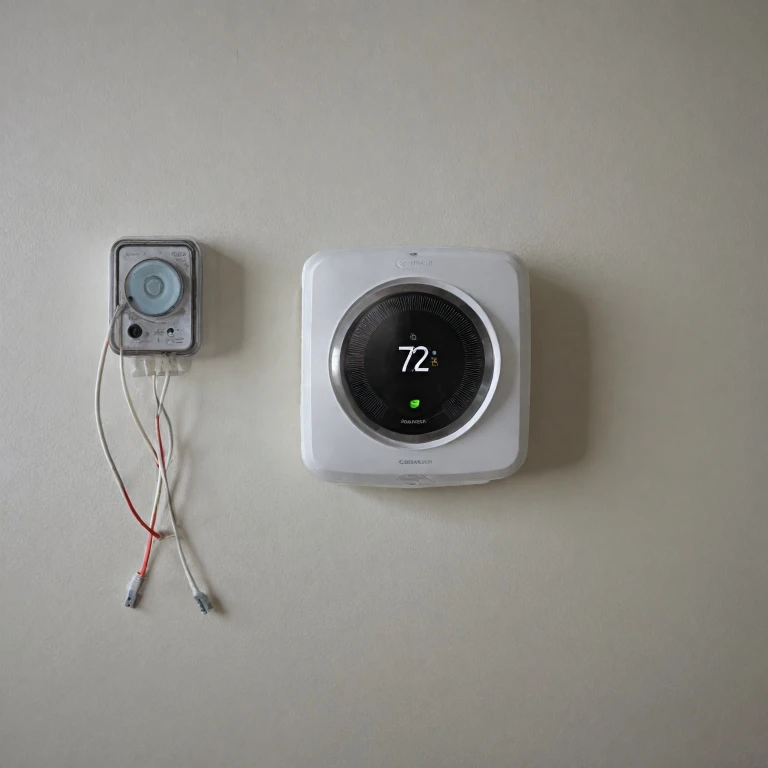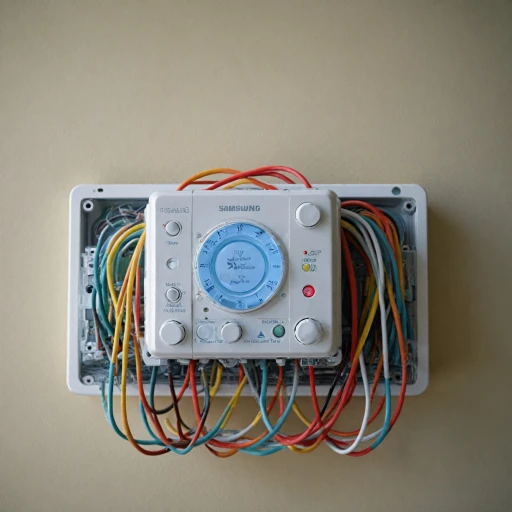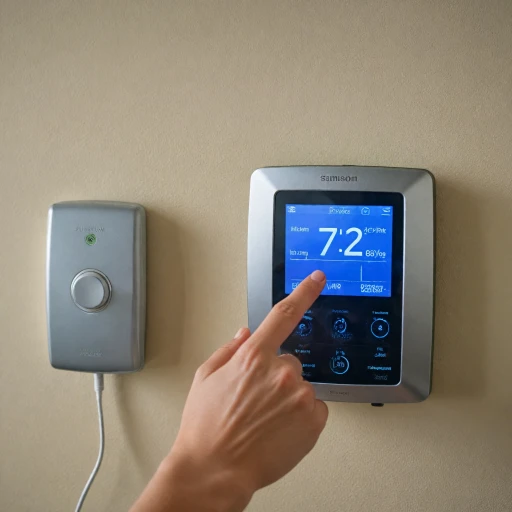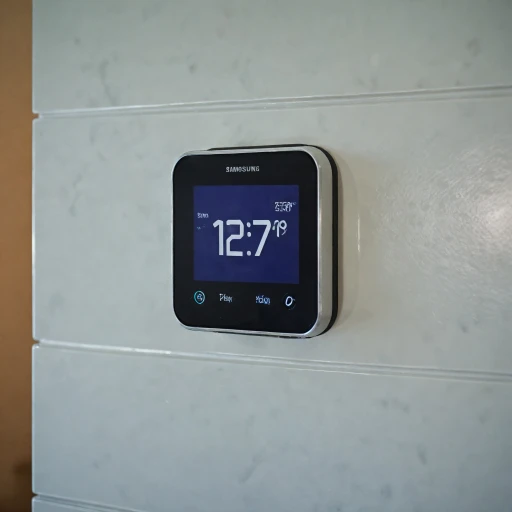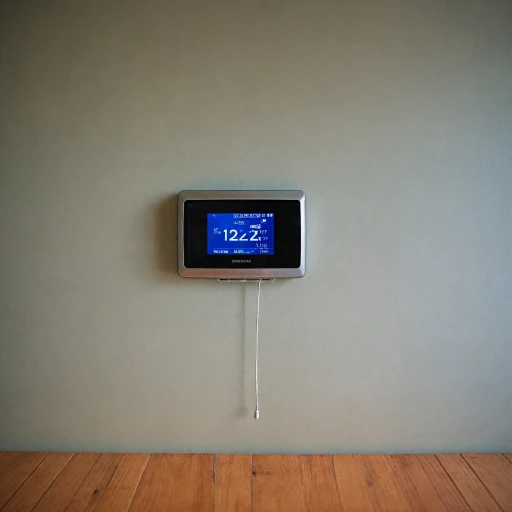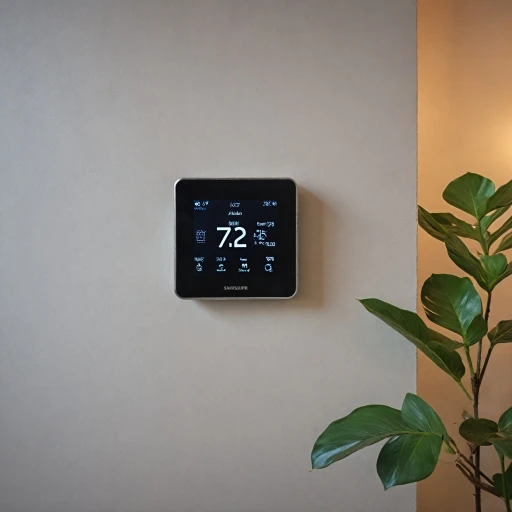
Understanding the Costs of Replacing a Nest Thermostat
Key Factors Influencing the Financial Outlay
Replacing a Nest Thermostat involves several financial aspects that can affect the total cost of your new smart thermostat project. From the initial purchase to the final installation, understanding these expenses can help you budget effectively.- Unit Purchase Price: The retail cost of a Nest Thermostat is a primary consideration. With models like the Nest Learning Thermostat, prices can vary based on the generation of the thermostat you choose. Older models may be slightly cheaper, while the newest ones, equipped with advanced features, tend to be more expensive.
- Installation Costs: Whether you opt for a DIY approach or seek professional help, installation costs will vary. For a do-it-yourself installation, you may incur costs related to tools and potential additional equipment needed to connect the thermostat efficiently to your HVAC system. In contrast, professional installation costs can include labor fees.
- Compatibility Considerations: If your existing system is not compatible with a smart thermostat, additional purchases may be necessary. This might include adapters or new wiring to ensure seamless operation with your existing heating and cooling systems.
- Potential Long-Term Savings: It's essential to evaluate how a Nest Thermostat can contribute to energy saving in the long run. These smart thermostats are designed to reduce energy consumption by optimizing temperature control and can lead to significant savings on your monthly energy bills.
- Additional Equipment: Depending on your specific needs, integrating other smart home devices and platforms like Google Assistant can add functionality but may also increase costs. Ensure these additions align with your overall goal for the thermostat installation.
- Maintenance and Troubleshooting: While a Nest Thermostat is generally low maintenance, troubleshooting any issues that arise can incur additional costs, especially if professional assistance is required.
Installation Options: DIY vs. Professional Help
Choosing Between DIY and Professional Installation
When it comes to the installation of a smart thermostat like the Nest, you have two main options: doing it yourself or hiring a professional. Both methods come with their own set of pros and cons, impacting the cost and ease of the installation process. Starting with the DIY route, many smart thermostats, including the Google Nest learning thermostat, come with comprehensive instructions. These often guide users through the installation process with step-by-step directions, making it feasible for someone with basic technical skills. This approach tends to be more cost-effective as it eliminates additional labor fees. However, it requires you to dedicate time and effort to understand the setup fully. You can find detailed guides, such as the lux thermostat comprehensive guide, that can help you get acquainted with thermostat installation. On the other hand, professional installation ensures that the thermostat works optimally within your HVAC system. This option, while often more costly, offers peace of mind, especially if your home’s heating and cooling systems are complex. Professionals bring expertise to the installation process, reducing the risk of damage to the unit or inefficiency in temperature control. When considering these options, it's crucial to evaluate the complexity of your current system and your comfort level with the task. While going the DIY route can save you on the average installation cost, professional help may save you further down the line by ensuring system compatibility and efficiency, contributing to energy saving over time.Potential Savings and Energy Efficiency
Maximizing Efficiency and Cost Savings with Smart Thermostats
Smart thermostats like the Google Nest are designed to optimize energy consumption, leading to reduced costs over time. These devices not only allow you to control your home's temperature remotely via an app but also have built-in learning capabilities that adapt to your habits and preferences.- Energy Efficiency: By understanding your schedule and preferences, a Nest Learning Thermostat can adjust the heating and cooling systems automatically. This minimizes unnecessary energy use, which translates into savings on your utility bills.
- Temperature Control: The Google Nest, for instance, provides precise temperature control, ensuring that your HVAC system runs only when necessary. This precision helps in maintaining a comfortable environment without excessive energy consumption.
- Smart Features: Many smart thermostats are equipped with features like Energy Star certification and integration with smart assistants such as Google Assistant. This compatibility provides easy control and improves efficiency, further enhancing energy-saving efforts.
- App Connectivity: Using the Google app or equivalent, you can monitor and manage your thermostat settings from anywhere. This level of control helps ensure that you're not heating or cooling an empty house, thereby further reducing energy use.
Compatibility and Additional Equipment
Ensuring Compatibility and Considering Additional Equipment
When replacing a Nest thermostat, one of the critical factors to evaluate is the compatibility with your current HVAC system. Different systems have varying requirements for thermostat installation, and ensuring that your Nest unit is compatible can save you from unexpected costs down the line.
Firstly, confirm that your HVAC system supports a smart thermostat. Many older systems may not have the necessary power supply, known as a common wire or "C-wire." Without this, your Nest device might not function efficiently. If your system lacks a C-wire, you may need to purchase an adapter, which can add to the installation costs.
Another aspect to consider is the Google Nest's compatibility with other smart home devices, particularly when using features like Google Assistant for voice controls. Ensuring seamless integration can enhance your overall experience and optimize your energy saving strategies.
Moreover, additional equipment such as temperature sensors might be required to improve the accuracy of your heating and cooling control. These can be strategically placed around your home to gather more precise temperature readings and adjust the system accordingly.
Compatibility with energy efficiency programs can also lead to financial incentives and rebates. Smart thermostats like the Nest often carry the Energy Star certification, indicating their capacity to help you save on energy costs. Leveraging these programs can offset the initial investment, making your transition to a smart thermostat more cost-effective.
Remember, ensuring compatibility and considering supplementary equipment is integral to fully benefiting from your Nest thermostat installation. This step not only supports a smoother transition but also maximizes the long-term efficiency and value of your investment.
Troubleshooting and Maintenance Costs
Troubleshooting Common Issues
Replacing a Nest thermostat may seem straightforward, but it's not uncommon to encounter problems that incur additional costs. Here's a look at some possible issues.- Connection Concerns: Sometimes, a Nest thermostat might struggle to connect with your Wi-Fi. This affects its ability to control heating and cooling systems effectively. Ensuring your Wi-Fi is strong and stable in the installation area can save time and resources.
- Compatibility Issues: Checking compatibility with your existing HVAC system before purchase is crucial to avoid extra expenses. Not all systems support every feature of Google Nest or Ecobee smart thermostats, potentially necessitating additional equipment.
- Firmware Updates: Updates are necessary for keeping the unit's features and security protocols current. This maintenance is usually performed automatically via the Nest app, but any interruptions in updates could hamper the thermostat's learning and adaptive capabilities.
Maintenance and Repair Costs
While Nest thermostats are designed for durability, they may need occasional maintenance. Here's what to consider:- Regular Cleaning: Dust accumulation can interfere with sensor accuracy and impact temperature control. A simple cleaning routine can maintain the system’s performance.
- Professional Repair: In case of mechanical failure, repair costs can vary. If your system requires repair by certified technicians, consider this when budgeting.
- Extended Warranties: Purchasing an extended warranty might cover some repair expenses, but weigh this cost against potential future repair scenarios.
Evaluating the Long-Term Investment
Long-Term Benefits of Switching to a Nest Thermostat
Investing in a smart thermostat like the Nest can be more than just a way to modernize your home’s heating and cooling system; it’s a strategic move for long-term savings and energy efficiency. Here are some key aspects to consider when evaluating the long-term investment of a Nest thermostat installation:
- Energy Efficiency: Smart thermostats are designed to reduce your energy consumption by learning your schedule and automatically adjusting the temperature for optimal efficiency. The Nest Learning Thermostat, for example, can lead to significant energy savings over time, contributing to a reduction in your utility bills.
- Cost-Effectiveness Over Time: While the initial thermostat cost and installation cost may seem steep, the investment can pay off in the form of lower heating and cooling costs. When correctly integrated with your HVAC system, smart thermostats help you avoid energy waste, making your system work only when necessary.
- Integration with Smart Home Systems: Smart thermostats, including the Google Nest, can integrate with platforms like Google Assistant, allowing you to have centralized control over your entire smart ecosystem. This integration can further enhance your home's energy efficiency and user convenience, making daily interactions with your home’s systems seamless.
- Ongoing Maintenance and Upgrades: While smart thermostats are built for long-term use, regular updates via the app can introduce new features and enhancements. The minimal maintenance required for these units often translates into fewer costs compared to traditional systems, retaining efficiency and functionality over time.
- Improved System Performance: By monitoring patterns and temperatures, a Nest thermostat can prevent overuse of your air conditioning or heating system, potentially extending the lifespan of your HVAC systems.
Considering these factors, the long-term gains from reduced energy consumption and enhanced home intelligence can outweigh the upfront costs. Opting for a smart solution like a Nest thermostat goes beyond just immediate savings, offering lasting value and advanced control over your home's climate.
